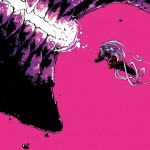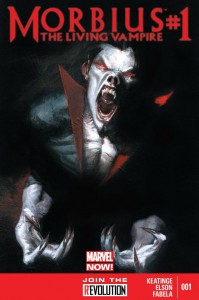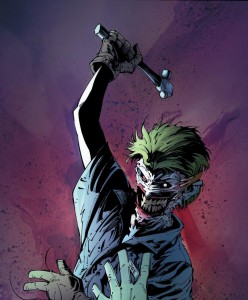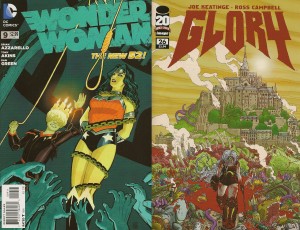 Ed. note – Ahead lies a blood soaked tale, rife with blood, sacrifice, and spoilers. You’ve been warned.
Ed. note – Ahead lies a blood soaked tale, rife with blood, sacrifice, and spoilers. You’ve been warned.
Glory #33 is the penultimate issue in Joe Keatinge and Ross Campbell’s sadly abbreviated relaunch. Why only 12 issues? Keatinge had this to say when asked about it by Comics Alliance back in December:
Sometimes, what you start off doing and what you end up doing are two different things. When I first came on, even before I had an artist, I wanted to have a massive story that went on for 70 issues, but the combination of actually working with Ross and, it’s so cliché to say it but it’s so true, the characters kind of take over sometimes. In this situation, it wasn’t really as grandiose a story as I initially thought as much as it was a story about the relationship between these two different people, Riley and Gloriana, and how they each affect these huge and small situations. When we really started re-plotting things out as it went along, after the 12th issue, without saying too much, it would become a totally different book. So maybe we should just leave the party early before our welcome’s worn out and tell this one story that seems to be what it’s about anyway.
Glory was shaping up to be an epic war story with a complex plot line spanning across the reaches of time, gorgeously drawn by Ross Campbell. Having now read issue 33 and seeing where the story is going, I get what he’s saying about the characters taking over. Riley and Glory’s relationship is the thread that ties the tale together, but I do still wonder, perhaps selfishly, if maybe Keatinge and Campbell are leaving the party a little too early.



 Podcast RSS Feed
Podcast RSS Feed iTunes
iTunes Google Play
Google Play Stitcher
Stitcher TuneIn Radio
TuneIn Radio Android
Android Miro Media Player
Miro Media Player Comics Podcast Network
Comics Podcast Network